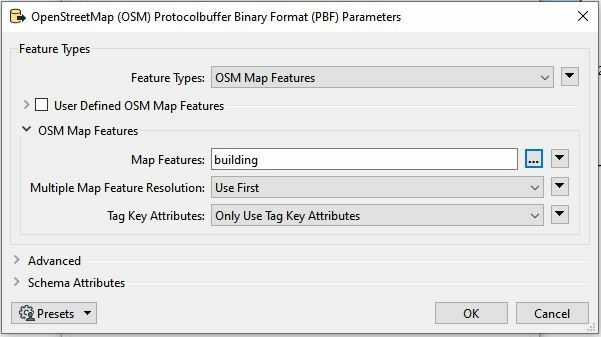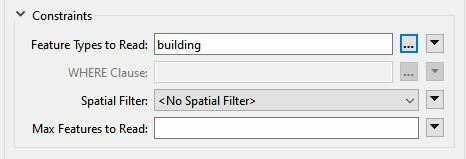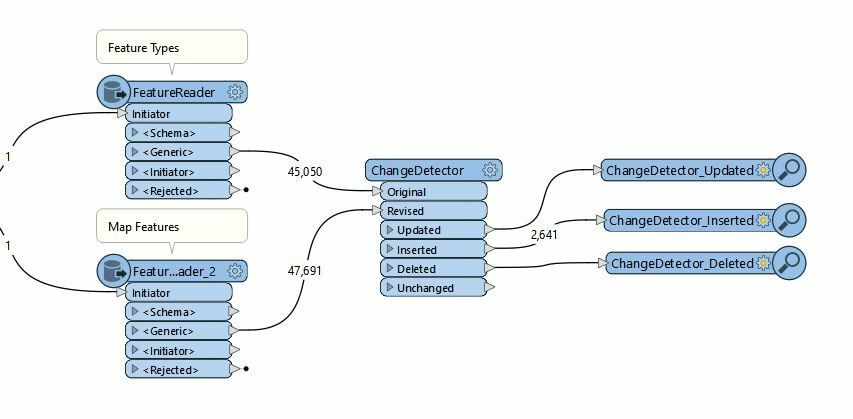I was experimenting with the OSM PBF reader, and I noticed that I get different results when I filtered on the Map Features vs the Feature types.
In my sample data, if I selected building in the OSM Map Features, it read in 47691 features. If on the other hand I left the Map Features blank and selected building in the Feature Types to Read, only 45050 features were read in.
If on the other hand I left the Map Features blank and selected building in the Feature Types to Read, only 45050 features were read in.
 Thoughts on why the mapping is different?
Thoughts on why the mapping is different?

I assume it has something to do with Multiple Map Feature Resolution, and I would expect extra features if it was set to Duplicate Features, but since it was Use First, I'm at a loss.






